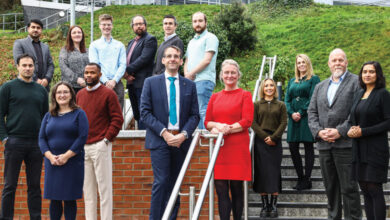Expect a tweet from government?
Owen McQuade speaks to the Head of Digital Engagement in the Cabinet Office, Andrew Stott, on how government can communicate better.
Technologies have come so far now that it’s not about finding new ones but more about “actually moving people up the adoption curve”, according to Andrew Stott.
Three years ago Twitter didn’t exist and unless you were lucky enough to still be a student, you were probably not on Facebook. For technology, Stott says, the big step that needs to be taken is for it to be taken up quicker by organisations because it can be effective and it can mean more efficiency.
His role in championing modern digital tools, he contends, is not solely a technology challenge. “Quite a lot is understood. People are using it both inside and outside government. But like any change, there’s a cultural issue: changing the balance between the providers and the consumers, and the people needing to understand how it will benefit their particular organisation.”
UK departments have made the step toward using Twitter, helped in no small part, for Stott, by research from Peter Mandelson’s business department on how organisations should use the social networking site.
In July 2009, head of digital channels at the Department for Business Neil Williams published his own department’s template on using Twitter. Running to 20 pages the plan aims to allow a department to get in touch with people it would not ordinarily have access to.
With the advent over the water of NHS Choices and its tweeting migration, Stott sees a step forward in putting information on public services out there. That, he says, “allows people to make informed decisions about what is available to them in the public services and to also feedback on them.”
Allowing people to comment on a service very easily shows a shift in cultural understanding. Often, for larger organisations, this is where they can find their “early wins”.
“They should not try and do it in some grand whole-organisation strategy but actually try to use it on a particular campaign, initiative or agency. Some of this is learning what works best not only for your organisation but also your audience,” he adds.
In Northern Ireland, with such large public sector workforce, there are well-known tight constraints on what information can be shared with the public, thus, are we faced with the prospect of a 140-word tweet by a government department needing to go through all the usual channels?
“As civil servants, we’re bound by the civil service code and that restricts the things civil servants can express their personal views on in whatever medium,” he admits.
Clarifying technology’s role, Stott adds: “What we are seeing is it giving organisations a more human face by showing what individuals in those organisations are doing … and the issues they face.” He cites the Department for International Development and the Foreign Office as cases in point.
Some of the latter department’s project officers in the field have been blogging on the work in Harare, which Stott says gives people more of an insight into what the Foreign Office actually does, given its relative distance from everyday life in the UK.
Organisations, as well as government in general, do need to strike a balance in terms of what is ‘allowed out’, but the fact is that the vast majority of “corporate twittering as he calls it is done by people in the press office, who are very much in touch with what departmental message is.”
Taking the advent of social networks further than Twitter, there is also a campaign fronted by England’s health and education departments on MySpace to point teenagers towards a long-term healthy lifestyle.
The campaign ties in with a current competition on the networking site for personal votes. Should users take the time to read through the information, they get a number of votes added to their page.
Although technology is so widely available, all organisations, Stott says, need to learn how to use it more effectively. First there is technology, then there is innovation: “Don’t try and preempt how people will work in terms of locking down work flow, especially for knowledge workers. Allow them some scope to innovate and use [it] in ways they find best.





